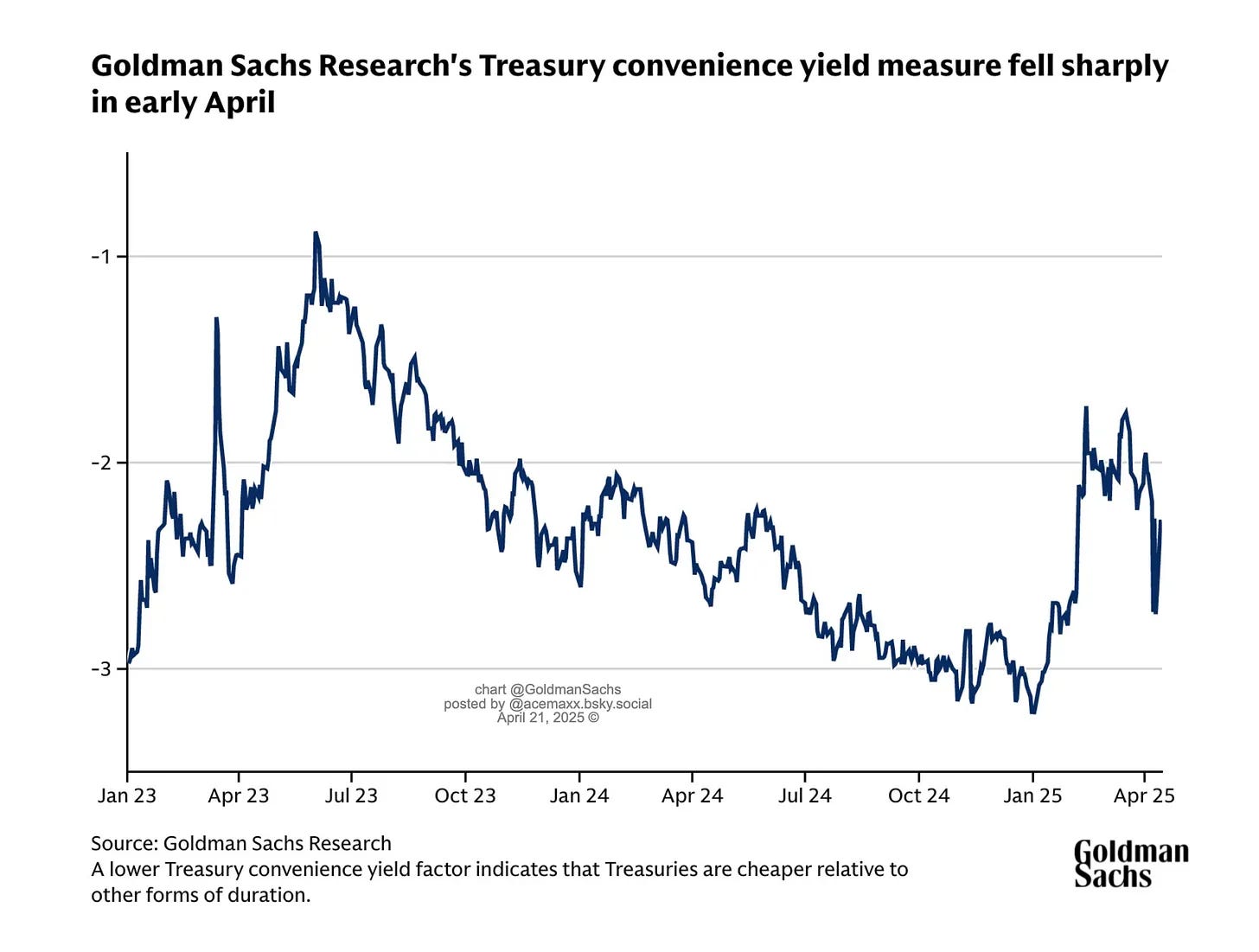Tariffs, Inflation and Real Interest Rates
Fed rate cut in the face of “Sell America”
JPMorgan AM Research emphasises in a recently published piece that
Trump «tariffs will slow growth, increase inflation and undermine confidence. The weaker demand will hurt revenues, higher costs will hurt margins and reduced profitability will hurt buybacks»
When new tariffs are implemented, they typically lead to higher prices for imported goods, which can contribute to inflation. In response to rising inflation, central banks often raise nominal interest rates to cool the economy. However, if inflation rises faster than nominal rates are adjusted, real interest rates (nominal rate minus inflation) could decline.

I had like to zero in on a very important and timely dynamic:
How do real interest rates, inflation, tariffs, and consumer income interact?
Paul Donovan, UBS also notes in the same matter in his blog that
«The real interest rates will decline in the face of the coming inflation surge. However, lower real rates boost economic growth when consumer or corporate incomes grow at a higher rate than the interest rate level»
Let’s break this down simply:
Will real interest rates fall if inflation rises due to tariffs?
Possibly, yes - but it depends on how nominal interest rates respond.

If inflation rises from higher tariffs (import prices ↑), but the central bank does not raise nominal rates proportionally, then:
Real interest rates (nominal – inflation) will fall.
This is often called a "passive monetary policy" response.
Can lower real interest rates boost economic growth even as consumer incomes grow?
Yes, but only under certain conditions.
Cheaper borrowing:
Firms and households borrow more for investment and spending.
Asset prices rise:
Helps consumer wealth effect (homes, stocks), which can boost consumption.
More business investment:
Companies invest more when capital is cheaper.
Multiplier effect:
More demand → more hiring → more income → more spending.

If consumer incomes are also growing, that amplifies this effect, because:
- Consumers have more spending power, even before borrowing.
- Growth is demand-led, not just credit-led.
So in this context:
Lower real rates + rising incomes = potentially strong short-term growth boost.
But there are caveats:
1. Inflation from tariffs = “bad” inflation (supply-side, not demand-driven).
2. If real wages don’t rise (i.e., income doesn’t keep up with prices), demand can fall.
3. Tariffs may cause misallocation (inefficiency), hurting productivity longer-term.

What happens if the Fed cuts rates?
Nominal interest rates fall → real interest rates fall (more negative).
- If inflation stays elevated and rates go down, real rates drop further.
That’s generally stimulative for:
- Credit
- Business investment
- Asset prices
- Consumer borrowing
But, if inflation is tariff-driven (supply-side), a rate cut won’t fix that
- It won’t bring down import prices.
- It could even fuel further inflation, if demand rises while supply is constrained or more expensive.
If real wages are not rising → households squeezed
- Even if credit gets cheaper, people may feel poorer and spend less.
- Lower rates might help temporarily via mortgages and credit cards, but won’t fully offset the pain if real incomes decline.

Bottomline:
A Fed rate cut in the face of tariff-driven inflation can help ease real rate pressure and support growth, but only if real incomes keep up. Otherwise, it risks fueling inflation without meaningfully boosting demand.
